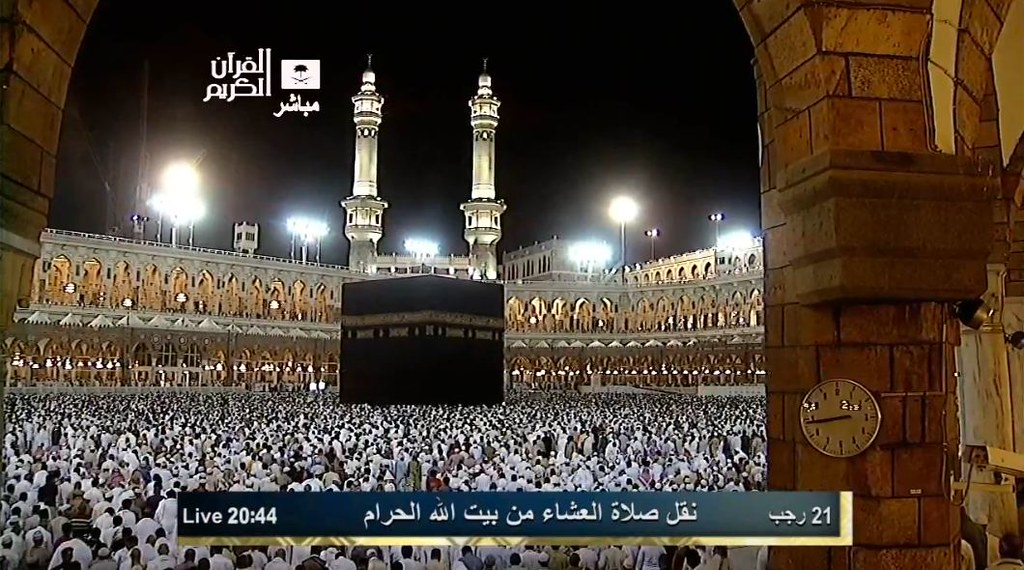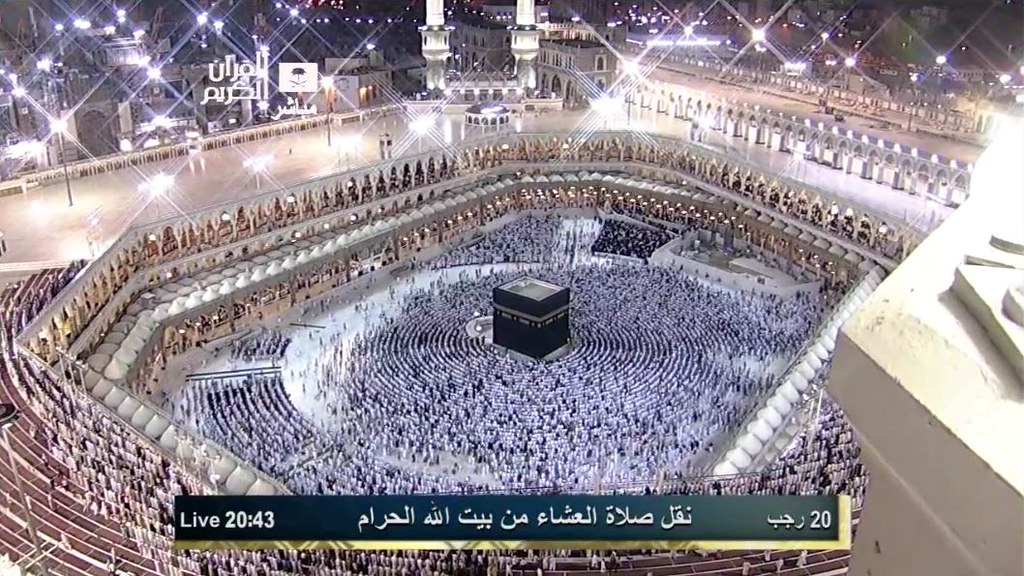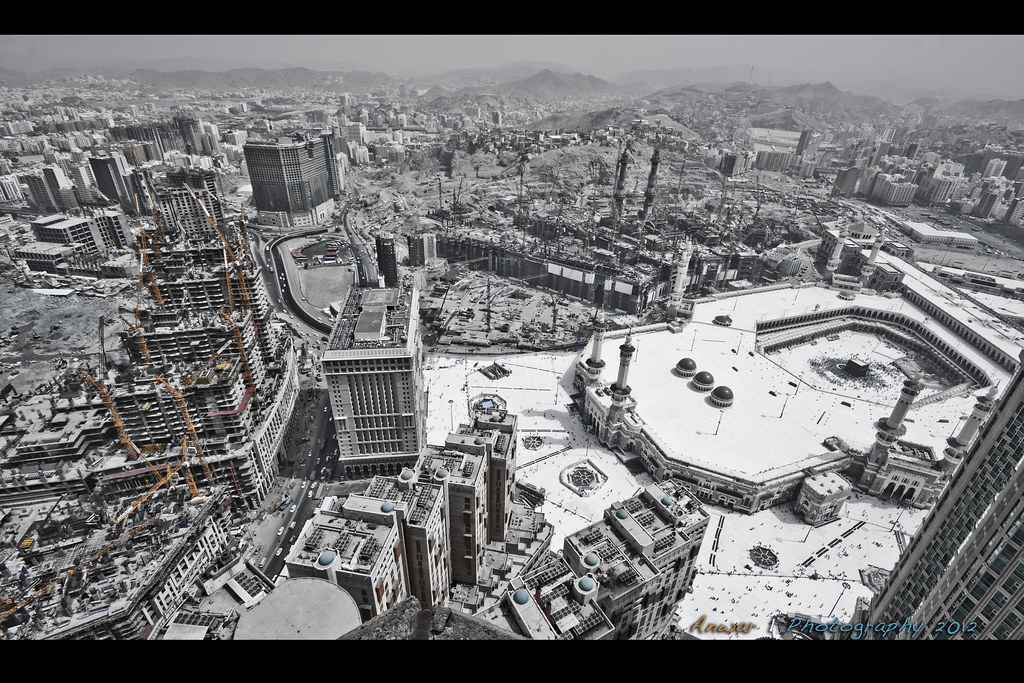Kejahatan memang bisa terjadi di mana saja. Jika ada niat dan kesempatan, para pelaku kejahatan tidak merasa segan untuk melakukan kejahatannya, termasuk di tanah suci. Dalam sebuah berita di poskota.co.id, terdapat beberapa modus kejahatan yang dilakukan di tanah suci. Berikut ulasannya.
MADINAH (Pos Kota) – Masih ada saja orang jahat di pusat ibadah seagung Masjid Nabawi, Madinah. Para penjahat, termasuk yang berasal dari Indonesia sendiri, memiliki sejumlah modus operandi kejahatan yang terus “diperbarui”.
Kepala Sektor Khusus Masjid Nabawi bentukan Misi Haji Indonesia di Madinah, Hendra Wirawan, telah mengumpulkan sejumlah modus kejahatan yang terjadi, sehingga seluruh jemaah hendaknya diimbau selalu waspada terhadap aksi kejahatan di tanah suci.
1. Tas bawaan ditaruh di ujung sajadah/tempat sujud digondol maling. Kasus ini menimpa seorang jamaah dari Padang. Tasnya berisi 12 juta rupiah dan 1.500 riyal (living cost) serta kamera digital. Tas hilang pada rakaat ketiga. Pada saat yang sama, jamaah yang sedang salat di belakangnya bawaannya juga raib. Muncul kecurigaan pelakunya adalah anak yang berlarian di pelataran masjid. Polisi Saudi yang dilapori segera menangkap sejumlah anak yang berlarian. Tapi setelah dilihat, tidak ada indikasi mereka pelakunya. "Jadi sebaiknya tas tetap menempel di badan, jangan ditaruh," saran Hendra.
2. Perempuan bercadar dan berbaju hitam menyamar sebagai polisi wanita, menggeledah jamaah yang hendak masuk masjid. Seorang jamaah perempuan RI kehilangan HP akibat penggeledahan ini. Ada juga yang kehilangan dompet berisi 4.000 riyal karena dipepet orang.
3. Modus WNI mengantar jamaah RI tersasar. Setiba di tujuan, mereka minta bayaran. "Ada jamaah yang dimintai 50 riyal (Rp 125 ribu)," katanya.
4. Modus menawarkan membeli kambing untuk membayar dam.
5. Modus peminta-minta yang mengaku mahasiswa Palestina, meminta sumbangan. "Jamaah kita biasanya mudah iba. Kemarin saya nemui jamaah yang juga memberi sumbangan, kami dekati, kami tanya: Bapak tahu tidak apa yang Bapak lakukan'. Itu untuk memastikan Bapak itu tidak diperas," ujar Hendra.
6. Kejahatan riskan terjadi di pasar tumpah, yang berada di gang-gang dan pinggir jalan yang ramai. "Seorang jamaah perempuan yang tasnya nempel di badan, kemarin teriak ada copet. Kami kejar, pelakunya kabur," ujar Hendra.
7. Tas disilet saat berdesak-desakan keluar dari Masjid Nabawi usai salat wajib. Seorang jamaah di Sektor I kehilangan dompet akibat modus ini.Modus di atas melengkapi modus yang telah terjadi sebelumnya yaitu pura-pura membantu jamaah tersesat. Di tengah jalan, pelaku merampas uang jamaah dan meninggalkannya begitu saja.
Atas semua insiden itu, Hendra menyarankan agar jamaah tidak banyak membawa uang saat ke masjid. "Bawalah paling banyak 50 riyal," pesan Hendra. Kalaulah membawa uang banyak untuk berbelanja, sebaiknya pergi berombongan sehingga saling menjaga.
Oknum sebangsa dan setanah air
Miris memang. Jika biasanya ikatan sebangsa-setanah air akan menjadi kuat ketika berada di tanah air orang lain, tetapi suasana itu belakangan ini dirusak oleh sesama pendatang dari tanah air. Di Madinah ada jamaah calon haji Indonesia yang dirampas uangnya. Ironisnya pelakunya diduga kuat masih saudara kita sebangsa.
Petugas haji Indonesia pernah memergoki seseorang yang menyamar sebagai petugas lengkap dengan seragamnya, diduga melakukan penipuan terhadap jemaah haji. Ada pula yang lebih memalukan. Saat tertangkap petugas, orang tersebut menyamar dengan berpakaian ihram, layaknya orang yang akan melaksanakan umrah. Lagi-lagi pelakunya bangsa sendiri.
Tak hanya jamaah, bahkan seorang petugas kesehatan rombongan jamaah haji khusus pun menjadi korban aksi perampasan. Seperti yang dialami Dokter. Pelaku berhasil merampas dompet korban yang berisi uang dalam bentuk rupiah dan riyal, beberapa kartu kredit, serta beberapa surat berharga. Korban mengaku bahwa pelaku bisa berbahasa Indonesia, tapi dia tidak bisa memastikan apa pelaku memang warga Indonesia.
Tips antisipasi kejahatan di tanah suci
Banyaknya modus kejahatan yang terjadi memang tidak seharusnya menjadi halangan untuk menunaikan ibadah haji. Namun, langkah antisipasi sangat perlu dilakukan. Berikut beberapa tips antisipasi kejahatan di tanah suci.
1.Jangan pergi sendiri
Jemaah haji Indonesia diharapkan jangan pergi sendirian untuk menghindari aksi perampasan yang dilakukan orang yang tidak bertanggung jawab. Jamaah hendaknya berangkat berkelompok minimal 4-5 orang. Hal itu diungkapkan Kepala Panitia Penyenggara Ibadah Haji Daerah Kerja Madinah, Akhmad Jauhari di Kantor Misi Haji Indonesia, Madinah, Arab Saudi. “Karena korban kejahatan seringkali sedang sendirian atau kesasar, dan biasanya orang lanjut usia,” katanya.
2.Membawa uang secukupnya
Menyikapi berbagai tindak kejahatan yang menimpa beberapa jamaah haji Indonesia di Madinah, Akhmad menghimbau agar jemaah sebaiknya tidak banyak membawa uang. Ia melihat saat ini ada tren jamaah membawa banyak uang di sakunya.
Ia menuturkan bahwa membawa banyak uang dalam rangka pelaksanaan ibadah haji justru akan membuat ibadah jemaah itu sendiri menjadi terganggu. Jemaah haji yang seharusnya fokus kepada ibadah, tentunya akan terpecah pikirannya karena memikirkan keamanan uangnya itu. Jadi, bawalah bekal secukupnya.
3.Gunakan jasa safety box di hotel tempat menginap
Di bagian lain, menanggapi beberapa aksi kejahatan di Masjidil Haram dan sekitarnya, Akhmad sebenarnya sudah mengusulkan kepada pihak pengamanan di Daker Makkah agar para calon haji saat ke Masjid tidak perlu membawa tas. ’’Yang dibawa hanya gelang identitas dan beberapa riyal secukupnya,’’ jelasnya. “Jika khawatir uangnya hilang, manfaatkan safety box yang ada di hotel,” tegasnya. (RA). Tips haji
http://www.cheria-travel.com/
Senin, 25 Juni 2012
Kamis, 21 Juni 2012
Rabu, 20 Juni 2012
Ramadhan Hadir Kembali
Hari Ini 1 Sya'ban 1433 H
Ramadhan insyallah Bulan Depan
bertepatan dengan 20 Juli 2012
(Menunggu Hasil Ru'yatul Hilal Pemerintah)
Ramadhan insyallah Bulan Depan
bertepatan dengan 20 Juli 2012
(Menunggu Hasil Ru'yatul Hilal Pemerintah)
Rabu, 13 Juni 2012
Selasa, 12 Juni 2012
New Saudi metro to ease Haj traffic
449.2km rail system will reduce congestion caused by about 70,000 buses during pilgrimage

February 2, 2012
Dubai: Saudi Arabia's new metro system will ease traffic congestion during the annual Haj pilgrimage, a top official has said.
The Haramain High Speed Rail project, which is under construction, will be a 449.2km high-speed inter-city system linking Madinah and Makkah.
Each year three million to four million pilgrims travel to Saudi Arabia to perform the Haj.
During the Haj around two million people come from abroad by air and an estimated one million come by road.
During this period, Makkah, which has a resident population of 1.7 million, experiences high congestion from the 70,000 vehicles that transport the pilgrims between the sites of the pilgrimage.
"The number of pilgrims is increasing. We have about 70,000 buses moving between [three holy places].
"It's very difficult to transport more than three million pilgrims in a very limited time and space," said Salim Al Bosta of the Central Directorate for Development of Projects at the Ministry of Municipal and Rural Affairs.
"The target group of the metro system will be the pilgrims from inside the country, from the Gulf states and pilgrims coming by land by bus," he added.
Shuttle transport from Arafat to Muzdalifah, which is about 12km, can take six to eight hours, and in some cases up to 10 hours because of the congestion.
Long hours
Around 25 per cent of pilgrims move between the holy places on foot to avoid spending long hours in vehicles on the roads. In the past, the high density of worshippers has resulted in some pilgrims being trampled to death.
The capacity of the Makkah metro will be 70,000 to 80,000 persons per hour in each direction, while the shuttle bus services reach a capacity of 10,000 persons per hour in each direction. The electric trains will transport pilgrims at a speed of 320 km/h. The system will have nine stations and will cater to the pilgrimage route along Makkah, Mina, Muzdalifah and Jabal Al Rahmah.
"To solve the transport problem to and from Al Mashaaer we need three train lines from Arafat to Muzdalifah to Mina, and in the future to the Grand Mosque," said Al Bosta.
The line will also be built keeping in mind development projects such as the extension of the Grand Mosque.
http://gulfnews.com/business/general...affic-1.974661
Senin, 11 Juni 2012
Minggu, 10 Juni 2012
King Abdulaziz Road, ‘Gateway to the city’
Saudi Arabia, Mecca
In collaboration with DHV, KuiperCompagnons have studied possibilities for the King Abdulaziz Road Mecca and touched the mystic of the Holy City of Mecca. The plan builds on already developed ideas and designs. The aim is a long-term sustainable development scheme and details, which is geared towards a high quality urban fabric, an urban fabric which can cope with uncertainties and challenges, is adaptive to change, flexible, differentiated and open to a rich urban life to make people proud of their town and say: " Mecca is my city".The studies and workshops resulted in the presentation ‘'Ingredients for a Master plan and the Design Development''.
A brief summary of concepts.
Social and cultural
Large numbers of pilgrims from all over the world visit Mecca. The master plan embraces diversity providing local centres within a cohesive framework. The design seeks to engage with the local population through education, social improvements and involvement, thereby increasing ownership, job opportunity
and civic pride.
The urban structure relates directly to the context of Mecca with opportunities to develop characteristic areas that reflect the diversity of Islam.
Physical
The physical structure responds to the existing geographical context of built and natural forms to develop identifiable and distinct urban areas.
The connections, visual and physical, aid orientation and enhance the importance and positioning of Al Haram and the Ka'Bah, as the centre of Mecca and the centre of Islam worldwide.
The transport connections respond to the requirements of the city’s wide connectivity and circulation whilst also ensuring a logical hierarchy and movement within and through the project area.
The public transport is considered as a fundamental element in the success of the project. Therefore it is provided with an importance and adaptability that improves the appeal of development plots and also allows the project area to function smoothly and to develop in the course of time.
Economy
The urban structure provides an adaptable framework for the entire project area which seeks to enhance the diversity of the economic base through the provision of a logical sequence of space, building forms and development use opportunities. The primary concept is to expand economic opportunities beyond peak period tourism during Ramadan and the Hajj.
The design seeks to engage and educate the local population to develop a skills base for job opportunity in construction and service industries, thereby establishing a stronger base for the economy of the city.
Religious and Spiritual
The urban structure respectfully places the central great importance on Al Haram and Ka'Bah as the orientation and arrangement tools.
A hierarchy of religious facilities is established to form community centres within the urban framework. Daily Neighbourhood mosques are located to form local centres supported with education, social and community facilities.
Architecture
The urban framework establishes a structure and logic in the arrangement and placement of buildings, scale and mass. The design substantiates in context, with opportunity for architectural style to develop and enhance the identity of Mecca.
Scale
The scale is developed in response to a physical context of built and natural form. It considers the context of projects locally, city-wide and globally, as being the centre of Islam. The scale of development is also influenced by climatic constraints, opportunities, appropriate potential usage and an optimum development of the area. However, the human scale of streets and people’s perceptions is considered a primary design tool.
http://www.kuiper.nl/index.php?section=Projects&id=205

Jumat, 08 Juni 2012
Grand Mosque to host 10 million worshippers after largest expansion
3 June 2012 / MÜHENNA KAHVECİ , MECCA
The Masjid al-Haram (Grand Mosque) in Mecca, where millions of Muslims from around the world convene every year for the annual hajj pilgrimage, will be able to host around 10 million worshippers when the ongoing expansion project, the largest in the mosque’s history, is completed.
There have been many projects to expand the capacity of the Grand Mosque, but the latest one will be the largest. It will increase the size of the mosque to 500,000 square meters, double its current size.
The mosque was first expanded by the Saudis in 1954, increasing its capacity to 300,000 people. The second expansion project took place during the reign of King Fahd bin Abdul Aziz, which increased the capacity to 630,000 people. The latest project is sponsored by King Abdullah Bin Abdul Aziz.
Currently, 52,000 Muslims can circumambulate the Kaaba in one hour. This figure is estimated to increase to 130,000 once the expansion project is complete.
The current project is being carried out in two stages. The first, which began in 2009, involved the demolition of 2,350 hotels, offices and other buildings around the mosque, with another 1,900 buildings set to be demolished soon.
The Saudi government is reportedly paying as high as 500,000 Saudi riyals (around $133,000) per square meter to the owners of the buildings close to the mosque in return for the expropriation. This brings the total figure to around $100 billion.
During the second stage, which is currently being carried out, the prayer area will be expanded.
Hotels will be built in the Jabal Omar region near the mosque to provide accommodation for 200,000 pilgrims. There are also ongoing efforts to ease transportation in Mecca, all of which have turned the city into a giant construction site.
To minimize the risk of overcrowding and to lessen congestion on the roads, the Saudi authorities began operating a Chinese-built train in 2010 that stops at hajj sites. Once fully functional, the railway is expected to reduce congestion caused by buses and cars during the hajj. It will also carry pilgrims performing their umrah, or lesser pilgrimage, throughout the year. Once completed, the Saudis estimate that 53,000 buses will disappear from the city’s crowded roads, promising a safer and more comfortable pilgrimage.
Currently, about 3 million pilgrims travel to Mecca every year for the annual hajj. It is estimated that the city will be able to host 10 million pilgrims once the ongoing projects are completed.
http://www.todayszaman.com/news-2822...expansion.html
Langganan:
Postingan (Atom)















